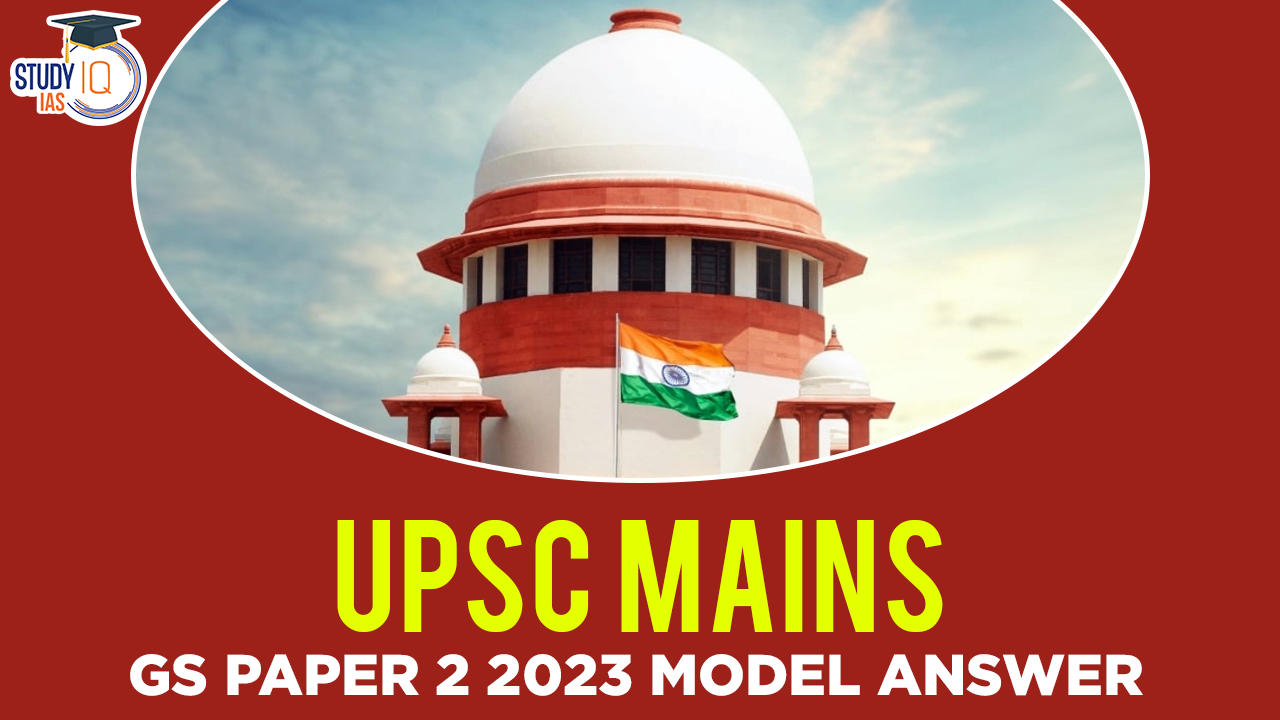Q15. Explain the significance of the 101st Constitutional Amendment Act. To what extent does it reflect the accommodative spirit of federalism? (15m)
Introduction:
The 101st Amendment to India’s Constitution, enacted as The Constitution (One Hundred and First Amendment) Act, 2016, established the Goods and Services Tax (GST) from April 1, 2017. GST, a comprehensive national Value Added Tax (VAT), consolidates all previous indirect taxes on goods and services into a single tax, simplifying taxation across the supply chain.
Body:
Significance of 101st Constitutional Amendment Act:
- Harmonisation of Taxes: GST aimed to simplify India’s complex tax structure by replacing multiple indirect taxes with a single, unified tax.
o E.g.: Prior to GST, a product like a smartphone could be subject to a value-added tax, excise duty, and other levies. With GST, these are merged into a single tax, reducing compliance burdens.
- Economic Integration: GST established a common market by facilitating the free flow of goods and services across state borders, reducing trade barriers.
o E.g.: A clothing manufacturer in Maharashtra can now easily sell its products in Gujarat without encountering state-specific taxes and paperwork.
- Revenue Sharing: The dual GST system ensures both central and state governments share GST revenues, promoting fiscal autonomy for states.
o E.g.: The GST Council determines the tax rates and revenue-sharing formula. If a state’s revenues decrease, the council can recommend compensation.
- Reduced Tax Evasion: GST introduced technology-driven compliance, leading to better tax collection and reduced tax evasion.
o E.g.: The GST Network (GSTN) tracks transactions and matches invoices electronically, making it harder for businesses to evade taxes.
GST reflecting accommodative spirit of federalism:
- GST Council (A. 279A): The GST Council includes representatives from the centre and states, fostering cooperation and decision-making in the GST regime.
o E.g.: The GST Council decides GST rates, with input from all stakeholders, ensuring that the interests of both centre and states are considered.
- Dual Structure: GST is a dual taxation system consisting of Central GST (CGST) and State GST (SGST). This division of tax revenue collection between the central and state governments allows each level of government to independently levy and collect taxes on the same transaction.
o E.g.: If you purchase a smartphone, both the central and state governments will collect taxes on it through CGST and SGST, respectively.
- Revenue Sharing: To ensure a smooth transition to the GST regime and to compensate states for potential revenue losses, the GST Council was established.
o The Council consists of members from both the central and state governments, and it makes decisions on tax rates, exemptions, and revenue-sharing mechanisms.
- Harmonisation of Tax Rates: GST has harmonised tax rates across states, reducing the scope for interstate tax competition that often resulted in distortions in the earlier tax regime. Under GST, products and services are taxed at a uniform rate across the country.
o This prevents states from lowering tax rates excessively to attract businesses, which could lead to revenue imbalances.
o E.g.: An example is the standard GST rate, which is the same for most goods and services across India.
- Elimination of Entry Tax: Before GST, states-imposed entry taxes on goods entering their territory, which acted as barriers to interstate trade. GST has abolished these entry taxes, promoting the free flow of goods and services across state borders.
- Input Tax Credit (ITC): GST allows businesses to claim ITC on taxes paid on inputs, capital goods, and services. This provision ensures that taxes paid in one state can be offset against taxes payable in another state, promoting the seamless movement of goods and services across state lines.
o E.g.: a manufacturer in Gujarat can claim ITC for taxes paid on raw materials purchased from a supplier in Maharashtra.
- Interstate Transactions: GST simplifies compliance for businesses engaged in interstate transactions by providing a single GST registration for operations across multiple states. This significantly reduces administrative burdens and encourages businesses to expand their operations nationally.
Conclusion:
GST in India embodies federal cooperation through the GST Council’s collaborative decision-making, harmonised tax rates, and seamless interstate trade, accommodating both central and state interests in taxation.
Check out the UPSC Mains GS Paper 2 2023 Analysis with detailed expatiation of the topics of Mains GS Paper 2 By the Study IQ Experts


 UPSC Syllabus in Hindi, Download यू�...
UPSC Syllabus in Hindi, Download यू�...
 IAS Salary Officer Per Month 2025, Check...
IAS Salary Officer Per Month 2025, Check...
 UPSC ESE Notification 2025 Out for 457 v...
UPSC ESE Notification 2025 Out for 457 v...



















